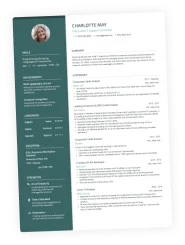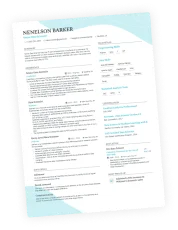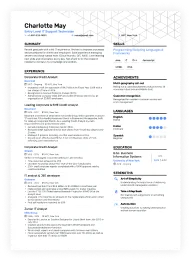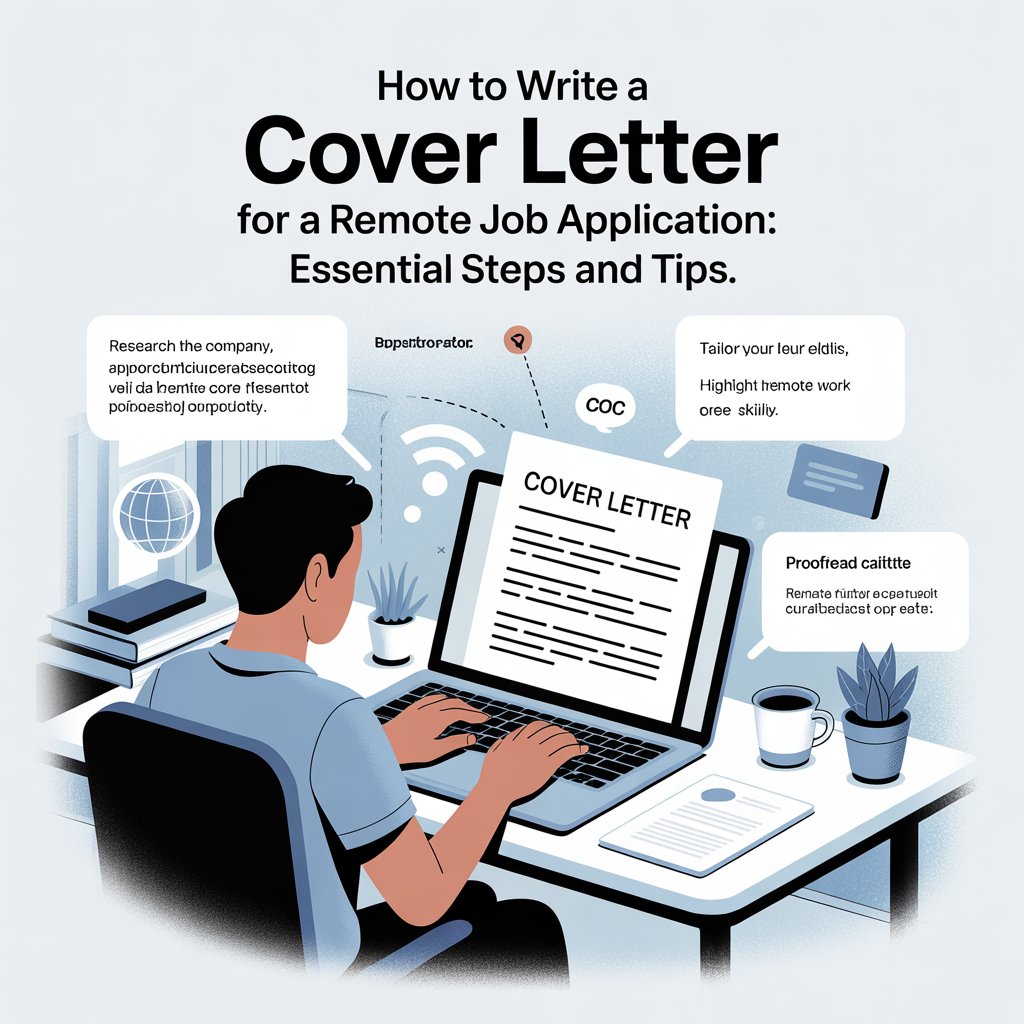Writing a solid cover letter can make a big difference when you’re applying for a job. It’s your chance to show potential employers who you are beyond your resume. A good cover letter should highlight your skills, express your interest in the position, and demonstrate that you know something about the company. Let’s break down what makes a cover letter effective and how you can make yours stand out.
Key Takeaways
- Always personalize your cover letter to the specific job and company.
- Start strong by clearly stating the position you’re applying for and why you’re excited about it.
- Highlight your relevant skills and back them up with specific examples or achievements.
- Keep your cover letter concise, ideally one page long, to respect the reader’s time.
- Proofread carefully to avoid any errors that could hurt your chances.
Essential Components Of Cover Letters
Contact Information
Okay, so first things first, you gotta make sure they know how to reach you! Your contact info should be right at the top. I usually put my name, address, phone number, and email all together. Makes it super easy for them, you know?
Date
Don’t forget the date! It’s like, a small thing, but it makes a difference. I usually just write it out like “April 24, 2025” right under my contact info. Keeps things organized, I guess.
Salutation
Alright, the greeting. This is where you try to be polite. If you know the hiring manager’s name, use it! “Dear Mr. Smith,” or “Dear Ms. Jones,” is always a safe bet. If you really can’t find a name, “Dear Hiring Manager,” is okay, but try to avoid “To Whom It May Concern.” It’s kinda impersonal, you know?
Personalization In Cover Letters
It’s easy to fire off the same cover letter to every job you see, but trust me, it shows. Taking the time to personalize your cover letter can really make you stand out. It tells the hiring manager you’re not just applying to any old job; you’re genuinely interested in their company and their specific role. It’s like showing up to a party with a thoughtful gift instead of a generic bottle of wine – it makes a way better impression.
Addressing The Hiring Manager
Okay, so “To Whom It May Concern” is basically a cover letter death sentence. It screams, “I couldn’t be bothered to do even the tiniest bit of research.” Finding the hiring manager’s name shows you’re proactive and detail-oriented. I know, it can be a pain, but LinkedIn is your friend here. A quick search can often reveal who’s in charge of hiring. If you’re still striking out, try calling the company. A friendly receptionist might just give you the info you need. If all else fails, “Dear Hiring Manager” is acceptable, but really try to avoid it.
Using Specific Names
Using the hiring manager’s name isn’t just about being polite; it’s about making a connection. It shows you’ve done your homework and you’re serious about the job. Plus, people naturally respond better when they see their own name. It’s a simple psychological trick, but it works! It’s like when someone remembers your name at a party – you instantly feel more connected to them. If you can find the hiring manager’s name, make sure to use it in your business letter format.
Avoiding Generic Greetings
Generic greetings are the enemy of personalization. They make your cover letter sound like it was written by a robot. “Dear Sir or Madam”? Nope. “To Whom It May Concern”? Absolutely not. These greetings are impersonal and outdated. They tell the hiring manager that you haven’t put any effort into learning about the company or the role. Instead, aim for a specific name or, as a last resort, “Dear Hiring Manager.” Remember, the goal is to show that you’re genuinely interested in this specific job, not just any job.
Crafting A Strong Introduction
Your cover letter’s intro is super important. It’s gotta grab their attention right away, or they might just skip the rest. Think of it like the first impression – you want to make it count!
Stating The Position
First thing’s first: be clear about the job you’re after. Don’t make the hiring manager guess! Start by clearly stating the specific position you’re applying for. This shows you’re organized and paying attention to detail. It also helps them quickly file your application. Mentioning the specific job title avoids any confusion.
Expressing Enthusiasm
Let your excitement shine through! A little enthusiasm can go a long way. Show that you’re genuinely interested in the role and the company. But, keep it professional – no need to go overboard. A simple, “I am very excited about the opportunity to…” works wonders. Enthusiasm is contagious, and it can make your application stand out.
Mentioning How You Found The Job
It’s always a good idea to mention where you saw the job posting. Was it on LinkedIn? A company website? A friend’s referral? This gives context to your application and can even help the company track where their best candidates are coming from. Plus, if it was a referral, mentioning the person’s name can give you a nice little boost. Here are some common ways people find job postings:
- Company Website
- Indeed
- Referral
Highlighting Relevant Skills
Tailoring Skills To The Job
Okay, so you’ve got a bunch of skills. Great! But here’s the thing: not all of them are going to be relevant to this job. You really need to customize this section. Read the job description super carefully. What are they really asking for? Then, think about your skills and experience and figure out which ones match up best. Don’t just list everything you’ve ever done; focus on what’s important for this specific role. It’s like picking the right tool for the job – you wouldn’t use a hammer to screw in a screw, right?
Using Specific Examples
Don’t just say you’re good at something; prove it. Anyone can say they’re a “team player” or have “strong communication skills.” But what does that actually mean? Instead of just stating a skill, give a specific example of when you used that skill and what the result was. For example, instead of saying “I’m a great project manager,” say “I successfully managed a cross-functional team of five to deliver Project X on time and under budget, resulting in a 15% increase in efficiency.” See the difference? Specific examples make your claims way more believable.
Quantifying Achievements
Numbers are your friend. Whenever possible, try to quantify your achievements. Did you increase sales by a certain percentage? Did you reduce costs by a certain amount? Did you improve customer satisfaction scores? Numbers make your accomplishments much more concrete and impressive. It’s one thing to say you “improved efficiency”; it’s another thing to say you “improved efficiency by 30%, resulting in a cost savings of $10,000 per year.” Quantifying your achievements makes it easier for the hiring manager to see the direct impact you can have on their organization. If you can’t think of any numbers, brainstorm! Think about the projects you’ve worked on and how you can measure your contributions. Even something as simple as “trained 10 new employees” is better than nothing.
Demonstrating Company Knowledge
It’s super important to show you’ve done your homework on the company you’re applying to. It makes you look serious and interested, not just like you’re firing off applications everywhere. I mean, who doesn’t want to feel wanted, right?
Researching The Company
Okay, so first things first: actually look at the company. Don’t just skim the homepage. Dig a little. Check out their “About Us” page, read some recent news articles about them, and see what they’re up to on social media. Knowing their recent projects, initiatives, or any big news can give you serious points.
Aligning With Company Values
Most companies have their values listed somewhere on their site. See if you can find them. Then, think about how your values line up with theirs. It’s not just about saying you’re a hard worker; it’s about showing how your work ethic fits with what they believe in. For example:
- If they value innovation, talk about a time you came up with a creative solution.
- If they emphasize teamwork, share an experience where you collaborated effectively.
- If they’re all about customer satisfaction, highlight your skills in customer service.
Expressing Interest In The Role
Don’t just say you want the job; explain why you want this job at this company. What is it about the role that excites you? What do you hope to achieve there? Maybe you could mention:
- A specific project they’re working on that you’d love to contribute to.
- A company initiative that you find particularly inspiring.
- How the role aligns with your long-term career goals.
Maintaining A Professional Tone
Okay, so you’ve got all the pieces of your cover letter together. Now, let’s talk about how you sound. It’s super important to come across as professional. You don’t want to ruin your chances by sounding too casual or, worse, unprofessional. It’s like dressing for an interview – you want to make a good impression.
Using Formal Language
Keep it formal. This isn’t the time to use slang or text abbreviations. Think of it as writing to someone you respect. Stick to proper grammar and avoid contractions like “can’t” or “won’t.” Instead, use “cannot” or “will not.” It might feel a little stiff, but it shows you’re taking the application seriously. It’s all about showing respect for the company and the hiring manager.
Avoiding Slang
Seriously, ditch the slang. No “gonna,” “wanna,” or anything like that. And definitely no emojis! Your cover letter is a professional document, not a text message to your friends. Using slang can make you look lazy or like you don’t care about the job. It’s a quick way to get your application tossed in the trash. Here’s a few things to avoid:
- Avoid using colloquialisms.
- Avoid using abbreviations.
- Avoid using emoticons.
Being Positive
Always keep things positive. Even if you’re explaining why you left a previous job, focus on what you learned and how you grew. Don’t badmouth former employers or complain about your past experiences. Hiring managers want to see that you’re optimistic and enthusiastic. A positive attitude can go a long way. Here’s how to keep it positive:
- Focus on your strengths.
- Highlight your achievements.
- Express enthusiasm for the role.
Keeping It Concise
Cover letters are important, but nobody wants to read a novel. Hiring managers are busy people. They’re sifting through tons of applications, so you need to respect their time. A long, rambling cover letter is a surefire way to get your application tossed in the ‘no’ pile. Let’s talk about how to keep things short and sweet.
Limiting To One Page
Your cover letter should almost always be limited to a single page. This isn’t just some arbitrary rule; it’s about showing you can communicate effectively and get straight to the point. If you find yourself going over, it’s time to start cutting. Think of it as an exercise in prioritizing the most important information.
Focusing On Key Points
To keep your cover letter concise, focus on the key points that will grab the reader’s attention. What are the top 2-3 skills or experiences that make you a perfect fit for this job? Highlight those. Don’t try to cram in every single detail from your resume. Instead:
- Identify the core requirements of the job.
- Pinpoint your skills that directly address those requirements.
- Showcase those skills with brief, impactful examples.
Avoiding Redundancy
One of the biggest space-wasters in cover letters is redundancy. Don’t repeat the same information multiple times in different ways. Be direct and clear in your writing. For example, instead of saying:
“I am a highly motivated and results-oriented individual with a strong work ethic, and I am always willing to go the extra mile to achieve success.”
Try something like:
“I’m a motivated individual dedicated to achieving results.”
Creating A Compelling Closing
Your cover letter’s closing is your last chance to make a positive impression. It’s where you solidify your interest and encourage the hiring manager to take the next step. Don’t just fade away; finish strong!
Reiterating Interest
Make it crystal clear that you’re still very interested in the position. A simple, direct statement works wonders. For example, you could say, “I am very interested in the job opportunity and believe my skills and experience align well with the requirements outlined.”
Expressing Eagerness To Discuss Further
Show that you’re proactive and keen to learn more. Express your enthusiasm for the opportunity to discuss your qualifications in more detail. Here are some ways to do that:
- “I welcome the chance to discuss how I can contribute to your team.”
- “I am eager to learn more about this exciting opportunity.”
- “I am available for an interview at your earliest convenience.”
Thanking The Reader
Always express gratitude for the reader’s time and consideration. It’s a simple gesture that shows respect and professionalism. Here are some options:
- “Thank you for considering my application.”
- “I appreciate your time and attention to my qualifications.”
- “I look forward to hearing from you soon, and thank you again for your consideration.”
Proofreading Your Cover Letter
Checking For Spelling Errors
Okay, so you’ve poured your heart and soul into crafting the perfect cover letter. Now what? Don’t just fire it off! Proofreading is absolutely key. I mean, think about it: a single typo can make you look sloppy and unprofessional. Use spell check, sure, but don’t rely on it completely. Read every word slowly and carefully. It’s easy to miss mistakes when you’re skimming, because your brain fills in what it thinks it should see.
Ensuring Proper Grammar
Grammar is another big one. It’s not just about spelling; it’s about how you put your sentences together. A misplaced comma or a subject-verb disagreement can totally change the meaning of what you’re trying to say. Here’s what I usually do:
- Read the letter out loud. Seriously, it helps you catch awkward phrasing and grammatical errors that you might miss when reading silently.
- Pay attention to verb tenses. Make sure they’re consistent and accurate.
- Watch out for run-on sentences. They’re a common mistake, and they make your writing hard to follow.
Reviewing Formatting
Formatting matters, too! A cover letter that’s all over the place is just as bad as one with typos. Here’s a quick checklist:
- Make sure your font is consistent throughout the document.
- Check your margins and spacing. A clean, well-organized layout is easier on the eyes.
- If you’re sending a physical letter, use high-quality paper. It makes a difference!
And here’s a pro tip: ask a friend or family member to proofread your cover letter for you. A fresh pair of eyes can catch mistakes that you’ve been overlooking. Trust me, it’s worth it!
Formatting Guidelines For Cover Letters
Let’s talk about making your cover letter look good. It’s not just about what you say, but how you present it. A well-formatted cover letter shows you pay attention to detail, and that’s always a plus.
Using A Clean Layout
Keep it simple. A cluttered cover letter is hard to read. Use white space effectively to separate paragraphs and sections. Think of it like designing a webpage – you want the important stuff to stand out. Here are some things to consider:
- Use consistent margins, like one inch on all sides.
- Left-align your text for easy reading.
- Make sure your contact information is clearly visible at the top.
Choosing Readable Fonts
Font choice matters more than you might think. Avoid anything too fancy or difficult to read. Stick to professional, clean fonts. Here are a few good options:
- Times New Roman: A classic, safe choice.
- Arial: Clean and modern.
- Calibri: Another good sans-serif option.
Font size should be between 10 and 12 points. Make sure it’s big enough to read comfortably, but not so big that it looks like you’re shouting. You want to make a good first impression, and choosing the right font helps with that. You can also look at cover letter examples to get an idea of what looks good.
Setting Appropriate Margins
Margins are your friend. They give your text breathing room and prevent it from looking cramped. Standard margins are usually around one inch on all sides. Here’s why they’re important:
- They make your letter easier to read.
- They create a professional appearance.
- They ensure your letter fits nicely on the page.
Don’t be tempted to reduce margins to fit more text. It’s better to cut content than to make your letter look crowded. Think of it as framing a picture – the margins highlight the content and make it more appealing. If you’re struggling to keep it to one page, focus on tailoring skills to the job and only including the most relevant information.
Common Mistakes To Avoid
Recycling Cover Letters
It’s tempting to use the same cover letter for every job application, but resist the urge! A generic cover letter screams “I didn’t put in the effort.” Instead, take the time to tailor each letter to the specific position and company. Think of it this way:
- Each job is unique.
- Each company has its own culture.
- Your cover letter should reflect that you understand both.
Being Too Generic
Similar to recycling, being too general is a big no-no. Avoid vague statements and focus on specific skills and experiences that align with the job requirements. Don’t just say you’re a “hard worker”; provide examples of how you’ve demonstrated that quality. For example, instead of saying you have great communication skills, describe a time you successfully resolved a conflict with a difficult client.
Neglecting To Customize
Failing to customize your cover letter is like showing up to a party in the wrong outfit. It shows you didn’t bother to learn the dress code. Customization goes beyond just changing the company name. It involves:
- Researching the company’s values.
- Understanding the specific needs of the role.
- Demonstrating how your skills and experience can address those needs.
Take the time to show them you’re not just looking for any job, you’re looking for this job.
Utilizing Action Verbs Effectively
It’s easy to fall into the trap of using passive language in your cover letter, but that can make you sound uninspired. Instead, use strong action verbs to showcase your accomplishments and skills. It’s a simple change that can make a big difference.
Choosing Strong Verbs
Instead of saying you “were responsible for” something, try using verbs like “managed,” “led,” or “coordinated.” The goal is to paint a picture of you as someone who takes initiative and gets things done. Think about the specific actions you took in previous roles and find verbs that accurately reflect those actions. For example:
- Instead of “Helped with marketing campaigns,” try “Spearheaded marketing campaigns.”
- Instead of “Was in charge of customer service,” try “Transformed customer service.”
- Instead of “Worked on data analysis,” try “Pioneered data analysis.”
Enhancing Descriptions
Action verbs can also help you add detail and impact to your descriptions. Instead of just stating what you did, show how you did it and what the results were. This is where you can really highlight your unique skills and contributions. For example, instead of saying “Developed a new website,” you could say “Engineered a new website design that increased user engagement by 40%.”
Conveying Confidence
Using strong action verbs can also make you sound more confident and assertive. It shows that you believe in your abilities and are not afraid to take on challenges. This can be especially important if you’re applying for a leadership position or a role that requires a lot of responsibility. So, ditch the passive voice and embrace the power of action verbs to make a lasting impression.
Using action verbs can make your writing stronger and more exciting. They help grab attention and show what you want to say clearly. If you want to learn more about how to use action verbs in your writing, visit our website for tips and examples. Don’t miss out on improving your skills!
Wrapping It Up
In conclusion, crafting a solid cover letter is key to making a good impression on potential employers. It’s not just about repeating what’s on your resume. Instead, focus on showcasing your skills and experiences that relate directly to the job. Personalize your letter for each application, and don’t forget to express your enthusiasm for the role and the company. Keep it concise, ideally one page, and make sure to proofread for any mistakes. A well-written cover letter can set you apart from the competition and open the door to an interview. So take the time to get it right, and good luck!
Frequently Asked Questions
Can a cover letter be two pages long?
It’s best to keep your cover letter to one page. This way, it’s easier for employers to read and find the important information.
What should I include in the introduction of my cover letter?
Start by saying what job you are applying for. You should also express your excitement about the position and mention how you found out about it.
How can I make my cover letter stand out?
Personalize your letter! Address it to a specific person if you can, and use examples from your own experiences that relate to the job you’re applying for.
Should I repeat my resume in my cover letter?
No, don’t just repeat what’s in your resume. Instead, highlight important parts and explain why they make you a good fit for the job.
How do I show that I know about the company?
Do some research! Mention something specific about the company that interests you and explain how your skills can help them.
What tone should I use in my cover letter?
Keep it professional and positive. Avoid using slang or casual language.
How can I make sure my cover letter is error-free?
Proofread your letter carefully. Look for spelling mistakes and check that your grammar is correct.
What formatting should I use for my cover letter?
Use a simple layout with clear fonts. Make sure your contact information is easy to find and use standard margins.











